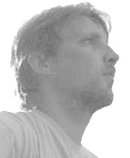Niklas Hartung
I2M, Aix-Marseille Université
https://www.math.uni-potsdam.de/professuren/mathematische-modellierung-und-systembiologie/personen/dr-niklas-hartung
Date(s) : 15/12/2014 iCal
14 h 00 min - 16 h 00 min
SOUTENANCE DE THESE
http://www.theses.fr/2014AIXM4763
Modelling of Metastatic Growth and In Vivo Imaging
Metastasis is one of the major problems of cancer because metastases areoften difficult to detect by clinical imaging and may develop rapidly. With the help of mathematical modelling, we hope to developnew tools capable of anticipating the metastatic state of a patient.The first two parts of this thesis are dedicated to developing such a tool, destined for a preclinical oreven clinical use. As tumour growth dynamics vary strongly between individuals and since observations are often sparse andnoisy, we need to consider computationally expensive statistical tools.In the first part, we extend an approach introduced by Iwata et al. and developed by Barbolosi et al. In particular, wepropose a more efficient numerical resolution based on a model reformulation into a Volterra integral equation of convolutiontype. This reformulation also permits to prove theoretical model properties (regularity and identifiability). Moreover, we study a stochastic generalisation of this deterministic model.In the second part, we will show that our approach is suitable for the description of experimental data on tumour-bearing mice.Using the statistical framework of nonlinear mixed-effects modelling, we build a metastatic model that is identifiable fromour data. We then interpret the results biologically.The last part of this thesis contains several results obtained in collaboration with biologists. We have started to model tumourgrowth with data obtained from SPECT imaging, using a model by Gyllenberg and Webb. Also, in order to improve the precision ofSPECT data, we have tested contour detection methods via finite volume methods based on DDFV schemes.
Sous la direction de Florence Hubert et de Guillemette Chapuisat.
à Aix-Marseille , dans le cadre de Ecole Doctorale Mathématiques et Informatique de Marseille (Marseille) .
Le président du jury était Jean Clairambault.
Le jury était composé de Benjamin Ribba, Assia Benabdallah.
Les rapporteurs étaient Anna Marciniak-Czochra, Marc Lavielle.
*Membres du jury :
–
Rapporteurs :
– Marc LAVIELLE, Université Paris-Sud
– Anna MARCINIAK-CZOCHRA, Universität Heidelberg
Examinateurs :
– Assia BENABDALLAH, Aix-Marseille Université
– Jean CLAIRAMBAULT, INRIA Paris-Rocquencourt
– Dietmar KRÖNER, Universität Freiburg
– Benjamin RIBBA, INRIA Sophia-Antipolis
Directrices de thèse :
– Guillemette CHAPUISAT, Aix-Marseille Université
– Florence HUBERT, Aix-Marseille Université
Catégories

